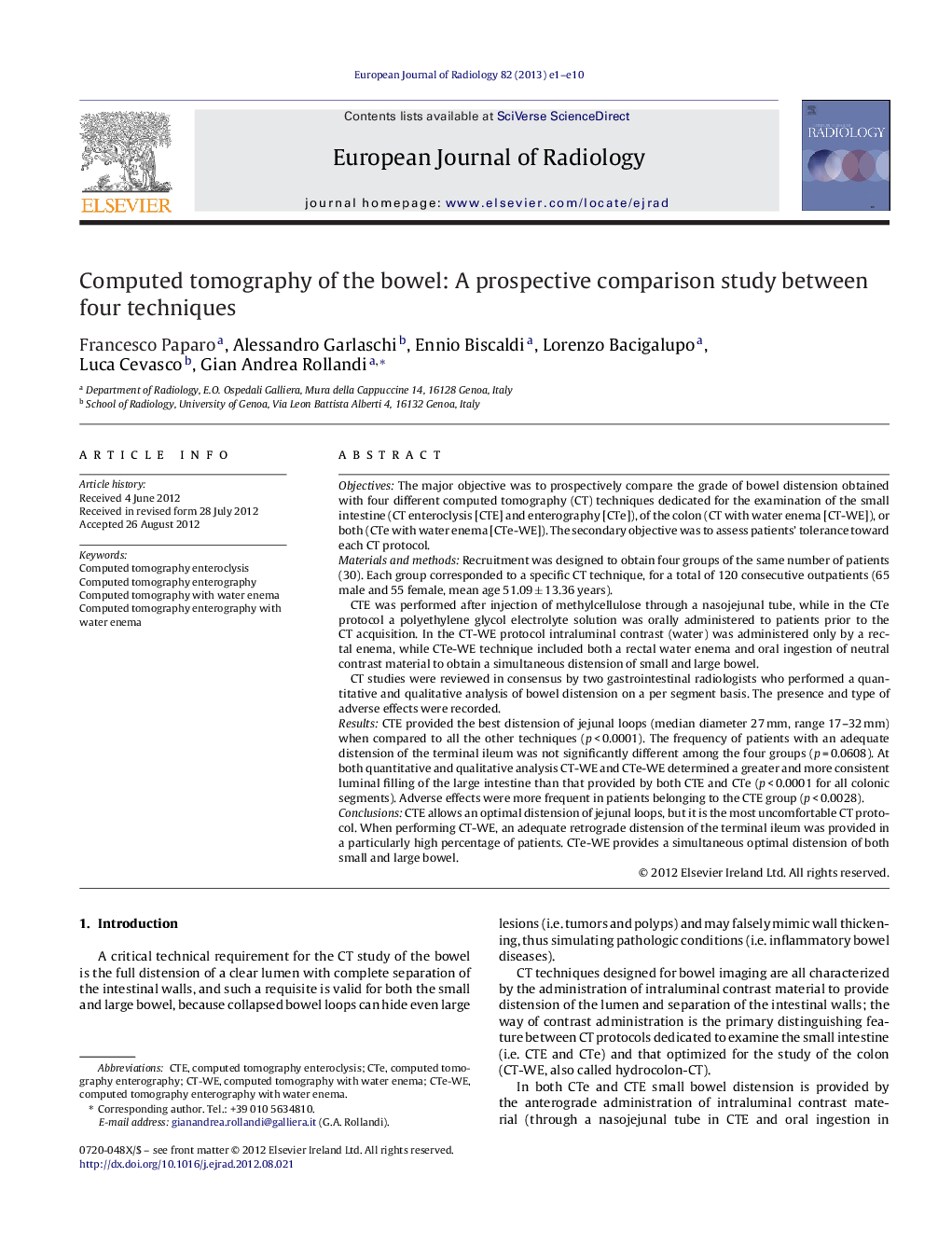| کد مقاله | کد نشریه | سال انتشار | مقاله انگلیسی | نسخه تمام متن |
|---|---|---|---|---|
| 4226047 | 1609782 | 2013 | 10 صفحه PDF | دانلود رایگان |

ObjectivesThe major objective was to prospectively compare the grade of bowel distension obtained with four different computed tomography (CT) techniques dedicated for the examination of the small intestine (CT enteroclysis [CTE] and enterography [CTe]), of the colon (CT with water enema [CT-WE]), or both (CTe with water enema [CTe-WE]). The secondary objective was to assess patients’ tolerance toward each CT protocol.Materials and methodsRecruitment was designed to obtain four groups of the same number of patients (30). Each group corresponded to a specific CT technique, for a total of 120 consecutive outpatients (65 male and 55 female, mean age 51.09 ± 13.36 years).CTE was performed after injection of methylcellulose through a nasojejunal tube, while in the CTe protocol a polyethylene glycol electrolyte solution was orally administered to patients prior to the CT acquisition. In the CT-WE protocol intraluminal contrast (water) was administered only by a rectal enema, while CTe-WE technique included both a rectal water enema and oral ingestion of neutral contrast material to obtain a simultaneous distension of small and large bowel.CT studies were reviewed in consensus by two gastrointestinal radiologists who performed a quantitative and qualitative analysis of bowel distension on a per segment basis. The presence and type of adverse effects were recorded.ResultsCTE provided the best distension of jejunal loops (median diameter 27 mm, range 17–32 mm) when compared to all the other techniques (p < 0.0001). The frequency of patients with an adequate distension of the terminal ileum was not significantly different among the four groups (p = 0.0608). At both quantitative and qualitative analysis CT-WE and CTe-WE determined a greater and more consistent luminal filling of the large intestine than that provided by both CTE and CTe (p < 0.0001 for all colonic segments). Adverse effects were more frequent in patients belonging to the CTE group (p < 0.0028).ConclusionsCTE allows an optimal distension of jejunal loops, but it is the most uncomfortable CT protocol. When performing CT-WE, an adequate retrograde distension of the terminal ileum was provided in a particularly high percentage of patients. CTe-WE provides a simultaneous optimal distension of both small and large bowel.
Journal: European Journal of Radiology - Volume 82, Issue 1, January 2013, Pages e1–e10